How the Internet of Things Will Affect Residential Electrical
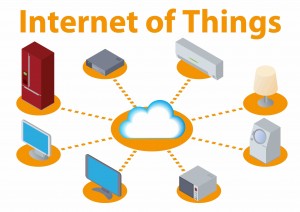 Think of a home that cools the air when you walk in the door, that makes a grocery list for you based on the food you take from the refrigerator, and that turns your sprinkler off and on depending on the local weather reports. This home of the future is now, and it’s based on a concept called the Internet of Things. It’s the basis of houses called “smart homes”: a super-connected network of appliances and systems that run as one smooth process to make your life more comfortable, save energy, and be frugal, all at the same time.
Think of a home that cools the air when you walk in the door, that makes a grocery list for you based on the food you take from the refrigerator, and that turns your sprinkler off and on depending on the local weather reports. This home of the future is now, and it’s based on a concept called the Internet of Things. It’s the basis of houses called “smart homes”: a super-connected network of appliances and systems that run as one smooth process to make your life more comfortable, save energy, and be frugal, all at the same time.
Electrical Costs
Homes with advanced residential electrical systems will eventually base their cost and usage on the time the electricity turns on, as well as the amount of power used. Electricity is more expensive to produce during the middle of a hot summer day than on a fall evening. Electrical usage costs should be based on the actual cost of producing this power, not an average cost over the length of the month. If you’re frugal and only use lights at night when needed and keep your air conditioning usage to a bare minimum, you should be able to reap the benefits of that frugality. With the Internet of Things, a home’s electrical system will be so connected that you’ll see energy savings on a daily basis simply because of the way you use your utilities.
Smart Appliances
The idea of finding energy savings simply by timing your dishwasher and dryer loads may seem too complicated, but with smart technology it will be a basic part of running the appliances. When electrical power is cheaper in the evening or in the middle of the night, large appliances will have settings allowing you to fill them and then pause the action until later in the day. Your clothes and dishes will still be clean tomorrow, but you’ll use much cheaper power for doing the same job. Household chores will no longer be solely the province of someone filling time during an off day. It will be natural for everyone to fill and set machines, since it will be more important to have them run later than to have the work done at the certain time during the day.
Air Conditioning
A good part of energy conservation in south Florida depends on air conditioning usage for a great part of the year. More than any other appliance, the air conditioning unit uses up power at an increasing pace as the year moves forward. The Internet of Things will include smart A/C units and thermostats connected to heat sensors in each room of the house. When the system finds a human body in one room, it can kick on and cool the air selectively to make that person comfortable. Once the residents leave the home for the day, a smart home system will shut down to use a minimum of power, creating energy savings for the duration of the day. Cooling the home later in the day when the residents are home will reduce power usage while still keeping everyone cool and comfortable.
Anticipation
The Internet of Things doesn’t just mean having a toaster and dishwasher that turn themselves off when you’re off to work. It’s an interconnected system that combines smart appliances, an intelligent utility system and a power grid that is responsive to power usage and able to ebb and flow with the environment as well as human usage. Homes with this type of system will notice when people haven’t been in the home for a day or two and will turn off the water heater to save power. It will automatically turn alarms on and off based on when body heat is present or absent in the building, and even email the utility company when power needs to be throttled down to the home when you’re on vacation. The Internet of Things is the use of technology in ways that achieve energy conservation, but it’s also about having a more comfortable and convenient lifestyle.
Read MoreIncrease Energy Savings by Adding Passive Designs to Your Home
The best way to save money on energy is to not use it in the first place. Passive home designs take advantage of environments that are naturally thrifty when it comes to using energy, and incorporate them into the home. Areas that naturally use less power are cheaper to run, and usually easier to maintain. Even if you already have a home, it’s possible to retrofit passive design elements into your house in order to realize big energy savings, and a home renovation is the perfect time to consider installing some of these elements into your home design.
Landscaping
In environments such as South Florida where cooling is a much bigger issue than heating, keeping out the warmth is the largest use of power for most home HVAC systems. Houses stay naturally cooler inside if the warmth of the sun doesn’t hit the interior. One of the simplest ways to achieve this is by planting smart landscaping around any exposed windows, especially on the ground floor. Bamboo is notoriously fast-growing, and vines on lattice installations provide attractive coverage throughout the year. Both design ideas can shade out the worst of the hot sun in a small amount of time.
Insulation
Keeping your home insulated isn’t just for northerners who need to keep the heat inside against the winter chill. Florida homes need to keep the cool air inside, leaving as much heat outside as possible. Installing an upgrade on your home’s insulation during a home remodeling can help to keep the right environment inside your home, saving you power and money by lowering the need for air conditioning throughout the day. Look to your attic insulation as well as that in the walls when deciding on where your insulation dollars will do the most good.
Heat Distribution
One of the worst culprits for power usage is in rooms that gather and hold the heat. Having a system to distribute and spread the heat around throughout the house helps to keep energy costs low. After all, one extremely hot room in your house is enough for most air conditioning systems to kick on until that room has cooled. Add a series of ceiling fans through your house during your home remodeling. Your electrical contractor can easily add them to the design plan, and during a renovation is the ideal time to include a major addition such as large ceiling fans.
Solar Panels
There’s a reason they call it the Sunshine State. In Florida, the sun shines down for a portion of almost every single day. Passive solar energy panels are among the most intelligent additions you can add to your home, when looking for passive energy savings. Once they’re installed, you don’t have anything else you have to do in order to realize massive savings on your energy bills. Some users even create so much energy from their solar panels that they are able to sell power back to the energy company. Speak with a licensed electrical contractor to make a plan to install solar power panels on the roof of your home, garage, or other buildings. This one change alone can make enough difference to pay for itself in just a few years, giving you free power for years after that.
Read More3 Ways to Achieve Energy Savings in the Home
Upgrading and improving the electrical usage in your home doesn’t have to mean getting a larger electrical bill every month. In fact, newer appliances, lighting, and fixtures are more efficient than the older ones you’ll be replacing. Plan your electrical renovation with energy conservation in mind. Your electrical contractor will know about all the newest additions you can use to improve your energy conservation, so involve him at the very beginning of the planning stage to get the most effective results.
#1: Insulation
One of the most effective ways to save money on energy is to simply not waste it. Make sure you have an effective insulation layer installed in your entire home, to prevent heat from leaking out in the winter and air conditioning in the summer. Some of the places you might not have considered are:
- Around the ductwork underneath the house
- At the access point where the dryer vent goes through the wall to the outside
- Between the floor and the crawlspace beneath the house
Look through your home for cool spots or places where the floor is especially cold in the winter to help track down the leaks where your energy and money are quietly sneaking outside.
#2: Lighting
The least expensive type of lighting is completely free: sunlight. Open your drapes and curtains on all sides of the house during the day, especially during the colder months of the year. Not only can you eliminate the need for keeping lights on during the day, the sunshine will add a certain amount of heat to the interior of your house, cutting down on the power needed to run your furnace.
When you do need to turn on the lights, save even more in energy costs by having an LED retrofit done where you currently have incandescent or older fluorescent bulbs. LED lights are cooler, so you’ll save money on air conditioning in the heat of summer, but they only use a fraction of the amount of electricity to run and they last about ten times longer than traditional bulbs, for the most part.
#3: New Technology
One of the advantages of planning a renovation with an electrical contractor is that he can let you know about new technology you may not have heard about. Incorporating this new tech into your home can increase your energy conservation and, as a consequence, save yourself money on your FPL bill each month.
Timers for your lights are nothing new, but today’s timers can control your whole house’s electrical system. Install an advanced timer in your home and your outdoor lighting will come on from dusk to dawn, the bathroom light will turn off after your kids leave it on, and lights will go on and off when you’re not there to fool burglars into thinking you’re home.
Saving money on lights is good, but energy conservation with HVAC will save you much more money. A programmable thermostat will allow you to set the heat or air conditioning temperature to different levels for different times of the day. Don’t heat the house when you’re gone, turn the heat down for a cool and comfortable night’s sleep, but warm up the house half an hour before the kids’ toes hit the tile floor. By only using power when it’s most needed, you’ll be more comfortable while using less energy.
Read MoreHow to Finance Energy Efficient Upgrades for Your Business
The savings and energy conservation your business realizes from a well-designed upgrade should make up for any concerns about financing an energy efficient upgrade. With the government and private company help available, finding the financing shouldn’t be an issue.
For many businesses, an upgrade can produce enough positive energy savings that any outlay can be paid back simply through lower energy bills each month. When investigation how to conserve electricity while finding the money to pay for it, business owners should investigate non-traditional methods as well as the usual government programs.
Justifying the Cost
In a financial environment that’s just beginning to stabilize again, you might find it difficult to justify investing thousands of dollars into newer energy efficient upgrades for existing systems, but it’s important to keep in mind that even high end improvements will pay for themselves over time. In addition, investing in energy conservation for your business is the only way to guarantee a lower energy cost in the future, which may include rate hikes over which you have no control.
Self Financing
If you’re planning on a relatively small energy conservation upgrade, the simplest way to pay for the project is to use funds from your company savings account. Once the upgrade has been installed, calculate how much the upgrade saves your business each month to determine the amount of money to repay the savings account.
The Department of Energy
While the federal Department of Energy doesn’t give cash outright to businesses, it does offer an array of energy tax credits to lower your financial burden at the end of the year. In addition, local and state departments of energy offer multiple loan and financing programs to small businesses.
For example, in Florida the Clean Energy Investment Program offers low-interest loans to businesses, and is created to encourage the adoption of energy conservation methods and energy efficient upgrades. Check with your city and county government to access any programs to help you finance your electricity conservation investment.
PACE
PACE, or Property Assessed Clean Energy, is a governmental program designed to encourage energy conservation by financing energy efficient upgrades. Cities or counties in the program loan homeowners and business owners the funds to upgrade their systems. The loan is then paid back on a regular schedule, usually for fifteen or twenty years, by paying an increased amount on the annual property taxes.
For most users of the program, they find very little difference in actual financial outlay by banking their energy bill savings and putting it toward the tax bill. Using this method, you may even see a profit over and above the expected repayment rate, depending on how efficient your new system is.
On-Bill Financing
Although not yet available in Florida, on-bill financing is a popular concept that’s growing throughout the United States. Utility companies provide the initial funds for homeowner or commercial energy conservation improvements, in the form of a loan. This loan can then be paid back through a monthly payment on the energy bill.
While many businesses find a small increase in monthly outlay, some who have installed particularly efficient systems may end up with a zero-sum situation, with their savings equaling their additional payment, and so won’t see any change to their electrical bill at all.
Read MoreHow to Upgrade Your Outdoor Lighting to Achieve Energy Savings
One of the best money saving tips you can make to lower your energy bill is to upgrade your outdoor lighting. Switching your lighting from traditional bulbs to more efficient LED lights can save you hundreds of dollars each year. Energy efficiency is the selling point of all LED lighting systems, but these lights can save you money in many different ways. Whether you have safety spotlights on your building or landscape lighting at the base of your property, you’ll enjoy energy savings for multiple reasons when you upgrade them to LED lighting.
Long Life
LED bulbs last about ten times as long as fluorescents, and even longer than that compared to traditional incandescent bulbs. When you’re not running out for light bulbs every few months, the savings can add up.
Durability
Traditional bulbs are built with a fragile filament, which makes them much easier to break. If you have birds pecking at your spotlight or lawnmowers running into your landscape ground lights, they’re apt to break on a regular basis. LEDs are solid, and can withstand a surprising amount of jarring and bumping.
Coolness
LED lights don’t heat up like traditional bulbs do. If your outdoor lights are a part of your landscape design, your expensive shrubbery can get dried out if the heat from the lights is concentrated on them for too long. Allowing your landscape to grow and mature without needing replacement plants is another way you’ll save with LED replacements.
Efficiency
You’ll see the largest energy savings from simple usage when comparing LED bulbs with incandescents or CFL varieties. LED replacements will use a fraction of the power, sometimes as low as 1/30th of the energy usage. While they use up much less power on a daily basis, LEDs are as bright or brighter than the traditional lights you’ll be replacing.
Increased Safety
You may see such large energy savings when you replace your current outdoor lighting with LED bulbs you’ll be able to add more lights around your property. Instead of just shining a light on the driveway or front door, you’ll be able to afford bright safety lights around the entire perimeter. A brighter yard is safer for people to walk around in after dark, and is also a deterrent for burglars and thieves.
Green Technology
LED lights are so efficient that you may be able to remove yours from the grid completely and hook them up to a small solar generator. A few unobtrusive solar cells can capture enough power to run the outdoor lights for many suburban homes. It’s free power to light your property, and a good safety addition in case of power outages.
Read More4 Ways to Use LED Retrofits to Promote Energy Conservation
Advocates of clean technology have long advised LED retrofits for turning your business greener, but they don’t always mention a secondary benefit: the conservation of electricity. Buildings use up about 40 percent of the world’s power every day, and anything you can do to get that number down will give you a positive impact on your bottom line.
Mercy Philadelphia Hospital installed LED exit lights, photo light controls, and other LED retrofits, and they’re now saving over $20,000 a year in energy costs. You don’t have to own a hospital or other large business to see savings and energy conservation with LED retrofits. Even small changes can make a noticeable difference on your bottom line.
Holiday Decorations
The increase in your power bill in December isn’t completely due to the lower temperatures. Many businesses make a point of decorating their buildings for the holidays. Depending on the amount of lights and ornaments you use, you can save a significant amount of energy for the month by using LED lights instead of the traditional incandescent variety.
Older style lights use about 40 watts per string, while LED lights are much lower, using about 4.8. Your total savings depend on your Christmas cheer and how much you want to celebrate with the neighborhood, but typical savings can run from $10 in the hundreds of dollars for the month of December.
Outdoor Lighting
Apartment complexes, nursing homes, and small business can all reduce their energy usage by installing LED retrofits into their existing outdoor lighting schemes. Buildings with landscape feature lighting, lights along pathways, spotlights to illuminate walkways and expanses of grass, and motion sensor anti-crime devices can all benefit from being changed over to a set of LED bulbs.
Changing out 200 typical incandescent bulbs can save enough energy in one year to power the average home in the United States for that same year. In addition, since LED bulbs last about 20 times as long as incandescent varieties, you’ll save time and money on labor for changing burnt out bulbs.
Parking Lot Lighting
Many parking lots suffer from dark corners and edges while the center is almost too bright underneath the traditional lights. Switching to LED parking lot lights can solve this problem, as the light from these bulbs diffuses more evenly underneath the area in which they’re installed. Switching out your bulbs to LEDs will give you more uniform lighting to increase lot safety, as well as saving a significant amount of energy on a monthly basis.
You can find additional savings by installing bi-level controls on your LED lights. These lights run normally at a dimmer level, then brighten up considerably when motion detectors sense movement in the lot beneath. Your lot will still be constantly lit, unlike with typical motion sensors, but you’ll save energy by not having the lights at full power all night long.
Indoors
You may see the largest savings of all by doing LED retrofits inside your business. Businesses across the country are seeing amazing energy savings simply by switching out their old traditional bulbs for more efficient LED versions. GM’s Lordstown, Ohio, complex is currently undergoing the world’s largest LED retrofit project. With about a third of the project done, GM has already seen an 80 percent drop in energy usage in one factory in the complex.
It’s doubtful that you have as many lights in your business as GM does in theirs, but you can perform the same LED retrofit on a smaller scale and still see the same type of energy savings.
Read More
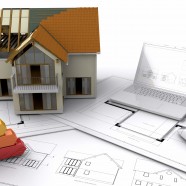
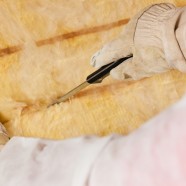
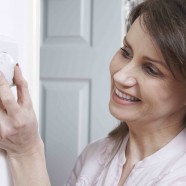

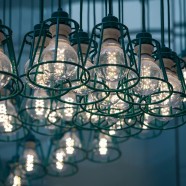
Recent Comments